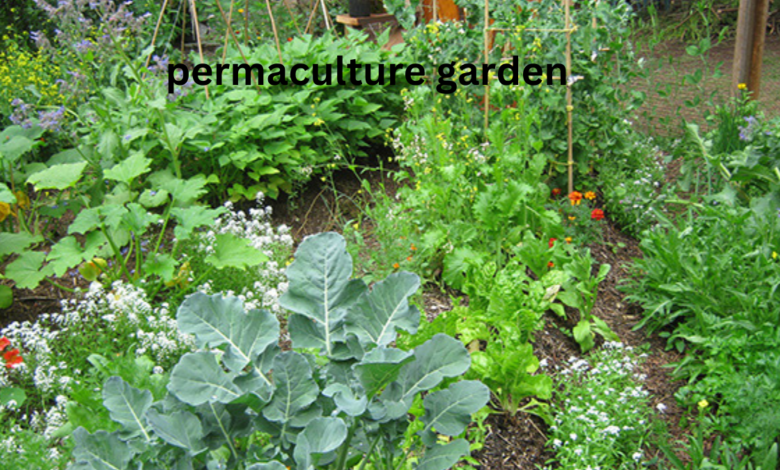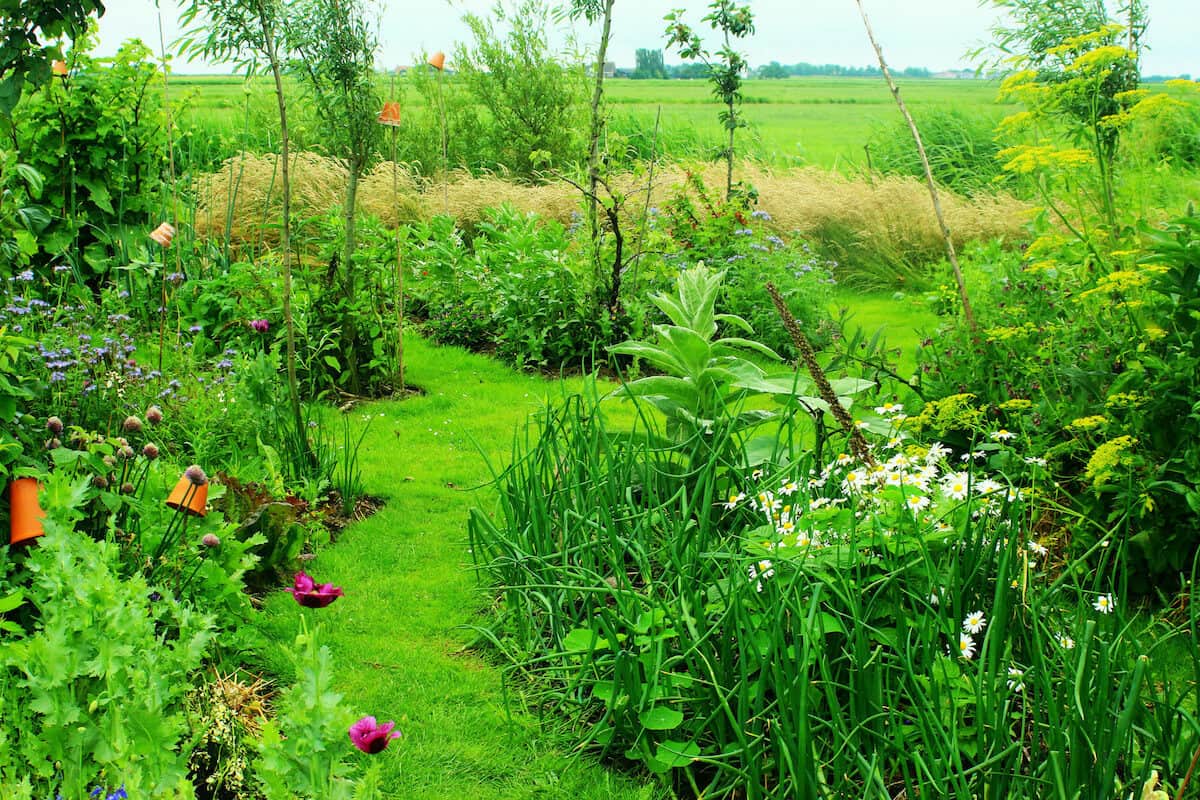Creating a Sustainable Paradise: The Ultimate Guide to Permaculture Gardening

Permaculture gardening isn’t just a trend; it’s a revolutionary approach to sustainable living that harmonizes with nature. It combines principles of ecology, organic farming, and community design to create a self-sustaining system that provides food, habitat, and natural resources while enhancing biodiversity. Whether you’re a seasoned gardener or just starting, embracing permaculture principles can transform your gardening experience and contribute positively to the environment.
In this guide, we’ll explore the fundamentals of permaculture gardening, the design principles that underpin it, practical tips for getting started, and the benefits that come from creating your permaculture garden. Let’s dive into the world of permaculture and discover how you can cultivate a thriving ecosystem right in your backyard.
Understanding Permaculture: Principles and Philosophy

At its core, permaculture garden is about creating a harmonious relationship between people and the land. The term itself was coined by Bill Mollison and David Holmgren in the 1970s, combining “permanent” and “agriculture” to emphasize sustainable, regenerative practices. But permaculture extends beyond just gardening; it encompasses all aspects of human habitation, including architecture, community, and lifestyle.
The Ethical Foundations of Permaculture
Permaculture is built on three core ethics that guide practitioners in their decision-making and design processes:
- Care for the Earth: This principle emphasizes the importance of nurturing our planet’s ecosystems. In permaculture, this translates to practices that maintain and restore soil health, water systems, and biodiversity.
- Care for People: Permaculture promotes sustainable living for individuals and communities. It encourages practices that enhance human well-being, support local economies, and foster community connections.
- Fair Share: Also known as “returning the surplus,” this ethic encourages sharing resources and knowledge with others. It’s about creating systems where abundance benefits not just individuals, but the wider community and environment.
Design Principles of Permaculture
Permaculture is not just about what you plant, but how you design your garden. Here are some key design principles that underpin successful permaculture gardens:
- Observe and Interact: Spend time observing your land and its unique characteristics. Take note of sunlight patterns, wind direction, and water flow. Understanding these factors will help you make informed decisions about plant placement and garden design.
- Catch and Store Energy: Use natural resources like sunlight and rainwater effectively. Consider installing rain barrels to capture rainwater or using solar panels to harness energy. Creating microclimates can also help maximize growing conditions.
- Produce No Waste: In permaculture, everything has a purpose. Kitchen scraps can become compost, and plant clippings can be used as mulch. By minimizing waste, you create a closed-loop system that benefits your garden.
- Use and Value Diversity: Biodiversity is crucial in permaculture. A diverse garden is more resilient to pests and diseases and can provide a range of food and habitat for wildlife. Companion planting, where different plants support each other, is a common technique in permaculture gardening.
Getting Started: Planning Your Permaculture Garden
Creating a permaculture garden requires thoughtful planning. While it can seem daunting at first, breaking it down into manageable steps will make the process smoother and more enjoyable.
Assessing Your Space
The first step in planning your permaculture garden is to assess your available space. Whether you have a large backyard or a small balcony, there are ways to implement permaculture principles. Here are a few things to consider:
- Site Analysis: Analyze your land’s topography, soil type, and microclimates. Take note of where sunlight falls at different times of the day and where water tends to collect or drain.
- Soil Health: Healthy soil is the backbone of a thriving permaculture garden. Test your soil for nutrient levels and pH. If your soil needs improvement, consider adding organic matter like compost or mulch.
- Existing Flora and Fauna: Observe the plants and wildlife already present in your space. Native plants often thrive better in their natural environment and can provide food and habitat for local wildlife.
Designing Your Garden Layout
Once you have a clear understanding of your space, it’s time to design your garden layout. A permaculture garden should be designed to maximize efficiency and minimize labor. Here are some ideas to consider:
- Zones: In permaculture design, zones help organize space based on usage frequency. Zone one, closest to your home, is where you plant high-maintenance crops and herbs, while zone five is left wild for wildlife. This zoning approach minimizes effort while maximizing productivity.
- Guilds: Planting in guilds involves grouping plants that support each other. For example, a classic guild is the “Three Sisters”—corn, beans, and squash. Corn provides support for beans, beans fix nitrogen in the soil, and squash spreads out to suppress weeds.
- Water Management: Incorporate swales or rain gardens to manage water flow effectively. These features help slow down water runoff, allowing it to seep into the ground, nourishing your plants.
Choosing Plants for Your Garden
The selection of plants is a crucial aspect of permaculture gardening. When choosing plants, aim for a mix of annuals and perennials, as well as a variety of heights and growth habits. Here are some tips for plant selection:
- Native Plants: Native plants are adapted to your local climate and soil conditions, making them easier to grow and maintain. They also support local ecosystems by providing food and habitat for native wildlife.
- Edible Plants: Incorporate a mix of fruits, vegetables, and herbs. Choose plants that you enjoy eating and that thrive in your local conditions. This not only enhances your diet but also reduces your reliance on store-bought produce.
- Companion Planting: Use companion planting techniques to enhance growth and reduce pests. For example, planting marigolds among vegetables can deter harmful insects while attracting beneficial ones.
Maintaining Your Permaculture Garden
Once your permaculture garden is established, maintenance becomes a matter of observation and adjustment rather than intensive labor. Here are some essential practices for maintaining your garden’s health.
Watering Wisely
Effective water management is key to a thriving permaculture garden. Here are some strategies to ensure your plants receive adequate moisture:
- Mulching: Apply a thick layer of mulch around your plants to retain moisture, suppress weeds, and improve soil health as it breaks down.
- Drip Irrigation: If necessary, consider installing a drip irrigation system to provide consistent moisture directly to the root zone of your plants. This approach minimizes water waste and encourages healthy growth.
- Rainwater Harvesting: Utilize rain barrels to collect rainwater from your roof. This water can be used for irrigation, helping to reduce reliance on municipal water sources.
Soil Health Management
Healthy soil is vital for a productive garden. Regularly monitor and improve your soil’s condition through the following methods:
- Composting: Create a compost bin to recycle kitchen scraps and yard waste. Compost adds nutrients to the soil, improves its structure, and encourages beneficial microorganisms.
- Crop Rotation: Change the location of your crops each year to prevent soil depletion and reduce pest and disease buildup. Rotating crops can enhance soil fertility and biodiversity.
- Cover Crops: Plant cover crops during the off-season to protect and enrich the soil. These crops prevent erosion, suppress weeds, and add organic matter when tilled back into the soil.
Pest Management Strategies
In a permaculture garden, pests are seen as part of a larger ecosystem. Here are some eco-friendly pest management techniques:
- Encourage Beneficial Insects: Create habitats for beneficial insects like ladybugs and lacewings, which can help control pest populations. Planting flowers like dill, fennel, and yarrow can attract these helpful critters.
- Natural Predators: Introduce natural predators like birds or bats into your garden. Birdhouses and bat boxes can provide shelter for these pest controllers, helping to keep harmful insects in check.
- Organic Solutions: When needed, use organic pest control methods, such as neem oil or insecticidal soap, to minimize harm to beneficial insects and the environment.
The Benefits of a Permaculture Garden
Creating a permaculture garden offers a myriad of benefits, not just for the gardener but for the environment and community as a whole. Here are some of the most significant advantages:
Enhanced Biodiversity
Permaculture gardens prioritize biodiversity, which contributes to healthier ecosystems. A diverse range of plants attracts various insects, birds, and wildlife, promoting natural pest control and enhancing soil fertility. This rich tapestry of life creates a resilient environment that can withstand challenges like climate change and disease outbreaks.
Sustainable Food Production
By incorporating permaculture principles, gardeners can grow food sustainably and reduce their reliance on industrial agriculture. A permaculture garden can produce fresh fruits, vegetables, and herbs year-round, leading to healthier eating habits and reduced carbon footprints.
Community and Connection
Permaculture gardening fosters community connections. Sharing knowledge, resources, and produce with neighbors creates a sense of belonging and collaboration. Community gardens designed with permaculture principles can serve as educational spaces, teaching others about sustainable practices and fostering a culture of environmental stewardship.
Personal Well-being
Gardening has numerous mental and physical health benefits. Engaging with nature reduces stress, promotes physical activity, and encourages mindfulness. A permaculture garden offers a peaceful retreat, providing not only food but also a space for relaxation and connection with the natural world.
Common Challenges and Solutions in Permaculture Gardening
While permaculture gardening offers many rewards, it’s not without its challenges. Being aware of these potential hurdles can help you prepare and find solutions.
Initial Investment of Time and Resources
Setting up a permaculture garden can require significant time and resources upfront. However, this initial investment pays off in the long run through reduced labor and input costs. To ease the process, consider starting small. Implement a few permaculture practices in a small area, gradually expanding as you gain experience.
Seasonal Variability
Gardening is subject to the whims of nature. Weather patterns, pests, and diseases can disrupt plans. Embrace the unpredictable nature of gardening by diversifying your plant selection and using crop rotation to build resilience against potential issues. Adaptation and observation are key components of permaculture.
Overcoming Soil Limitations
Poor soil conditions can hinder gardening efforts. To combat this, focus on building soil health through composting, mulching, and planting cover crops. Even in challenging soil conditions, you can create raised beds filled with quality soil to provide a better-growing environment.
Expanding Your Knowledge and Community
As you immerse yourself in the world of permaculture, continuing your education and connecting with like-minded individuals can enhance your gardening journey.
Workshops and Courses
Consider attending workshops or courses focused on permaculture principles and practices. Many local organizations offer hands-on learning experiences that can deepen your understanding and provide practical skills for your garden.
Online Resources and Communities
The internet is filled with valuable resources, from online courses to forums and social media groups dedicated to permaculture gardening. Engaging with these communities can provide support, inspiration, and valuable advice.
Volunteer Opportunities
Look for local permaculture projects or community gardens where you can volunteer. This hands-on experience not only enhances your skills but also connects you with others who share your passion for sustainable gardening.
Conclusion
Creating a permaculture garden is an enriching journey that nurtures both the land and the gardener. By applying the principles of permaculture, you can cultivate a vibrant ecosystem that produces food, enhances biodiversity, and fosters community connections. While challenges may arise, the benefits far outweigh the obstacles.
Embrace the beauty of working with nature, and allow your permaculture garden to evolve into a sanctuary that reflects your values and nurtures the earth. With patience, observation, and a commitment to sustainable practices, you’ll not only grow a thriving garden but also contribute positively to the world around you. Happy gardening!





